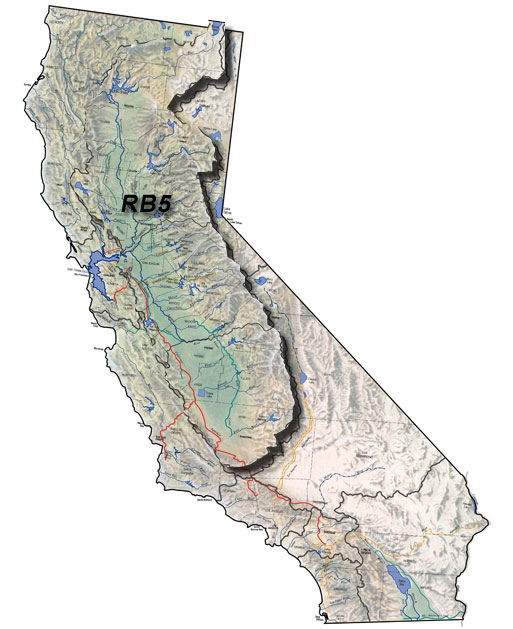| |
CEDEN - Central Valley Regional Data Catalogs
Return to Statewide Catalogs - To view regional specific catalogs, click on a region below.

Central Valley Projects
- SWAMP RWB5 Monitoring
The Surface Water Ambient Monitoring Program (SWAMP) is funded to assess the condition of California’s surface waters. The project SWAMP RWB5 Monitoring contains data from stations within the Central Valley Regional Water Board. Data types included in this project include water column and sediment chemistry and toxicity, benthic macroinvertebrate and physical habitat.
- Irrigated Lands Regulatory Program
In July 2003, the Central Valley Regional Water Quality Control Board authorized a conditional waiver for agricultural discharges to waters of the state. Initiated in 2004, monitoring has been conducted continually by agricultural coalitions for numerous constituents including physical parameters, sediment and water column toxicity, fecal indicator bacteria, and pesticides. Chemical analyses involved a range of pesticides commonly used by agriculture including organophosphates, herbicides, carbamates and pyrethroids. Chemical analyses were also conducted for legacy organochlorines.
In addition to the monitoring conducted by agricultural coalitions, irrigation districts may monitor under the Irrigated Land Regulatory Program and have Monitoring and Reporting Program Plans that are specific to the chemicals used by the irrigation district. Data are available from locations primarily in the San Joaquin Valley and data are added continually as they are generated by the coalitions.
Information regarding the Central Valley Regional Irrigated Lands Regulatory Program can be found on the at: http://www.waterboards.ca.gov/centralvalley/water_issues/irrigated_lands/
Irrigated Lands Regulatory Program Boundaries (from website): http://www.waterboards.ca.gov/centralvalley/water_issues/irrigated_lands/general_prog_info/coalition_boundaries_10jun08.pdf
- Total Maximum Daily Load (TMDL)
TMDLs are established to ensure that beneficial uses are not impaired. A TMDL requires that all sources of pollution and all aspects of a watershed's drainage system be reviewed, not just the pollution coming from discrete conveyances (known as point sources), such as a discharge pipe from a factory or a sewage treatment plant. Point sources are defined in the Clean Water Act, Section 502.
- Pesticide Reduction and Investigation of Source Mitigation (PRISM)
PRISM projects were funded in 2000 with Proposition 13 funds awarded to support research and source identification ($2 million), and mitigation measures to protect water quality from potential adverse effects of pesticides ($8 million). Possible projects included urban pesticide pollution projects, work related to the regulation of aquatic pesticide use and agricultural wastewater discharges, and other pesticide pollution projects related to water quality.
- Proposition 50
Proposition 50, Chapter 8 (Prop 50), provided approximately $380 million for two types of competitive grants for the Integrated Regional Water Management Grant Program (IRWM), planning and implementation. The Planning Grants were awarded to 1) foster development or completion of IRWM Plans or components thereof, 2) enhance regional planning efforts, and 3) assist more applicants to become eligible for Implementation Grant funding. Implementation Grants funded projects that met one or more of the program objectives of protecting communities from drought, protecting and improving water quality, and improving local water security by reducing dependence on imported water.
|



